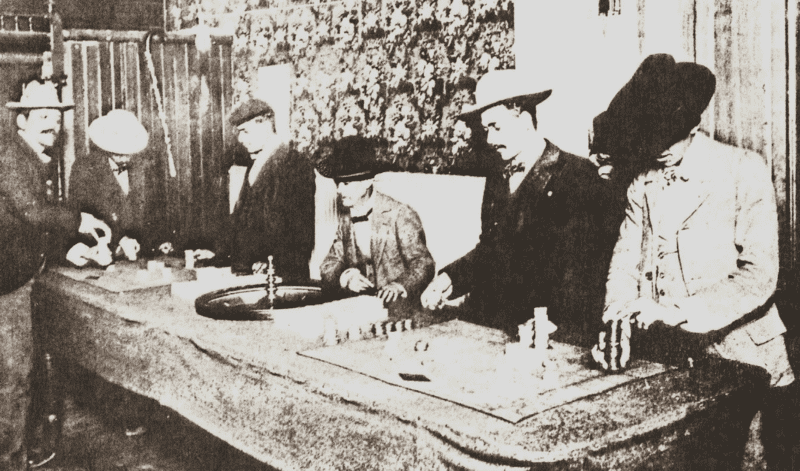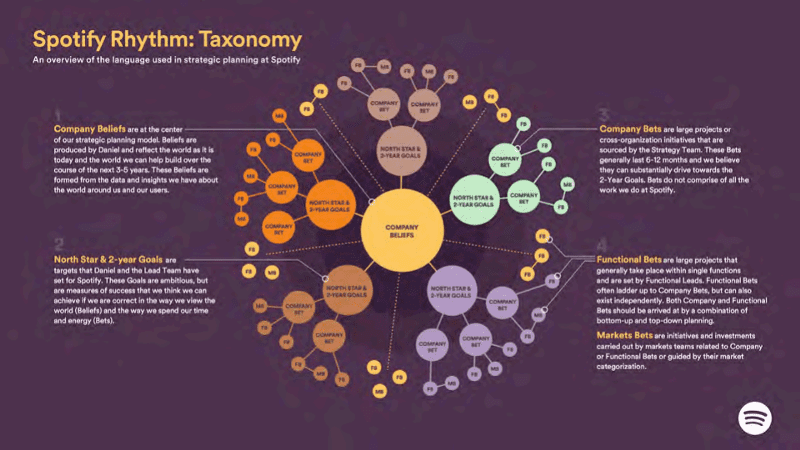Describing product (and company) strategy as a series of bets
In recent posts 12 Signs You’re Working in a Feature Factory, Success Theater, and Dear Product Managers, I discuss the resentment engineers and UX feel when product managers fail to reflect on actual outcomes. Part of the issue here is the challenge of building shared context and a shared vocabulary. Words are powerful, and they matter.
I’m always on the lookout for more effective ways to talk about strategy (especially in a way that resonates with the front-line). In this post, I’m going to talk about the power of the word bet.
 Old-school roulette (Wikipedia)A couple months ago, I read an interesting post by Henrik Kniberg where he shared his slides from a presentation at Agila Sverige. The slides describe Spotify’s current strategic planning approach (aka Spotify Rhythm) and are worth reviewing. Among all of the great nuggets, one thing in particular jumped out at me: the use of the word bet. Over the years I’ve encountered Projects, Missions, Initiatives, Epics, Objectives, Rocks, Boulders, OKRs, Experiments, and Goals (and a bunch more I’m probably forgetting)
Old-school roulette (Wikipedia)A couple months ago, I read an interesting post by Henrik Kniberg where he shared his slides from a presentation at Agila Sverige. The slides describe Spotify’s current strategic planning approach (aka Spotify Rhythm) and are worth reviewing. Among all of the great nuggets, one thing in particular jumped out at me: the use of the word bet. Over the years I’ve encountered Projects, Missions, Initiatives, Epics, Objectives, Rocks, Boulders, OKRs, Experiments, and Goals (and a bunch more I’m probably forgetting)
. But never Bets.
 Slide from Henrik’s presentationSo I tried Bets with teams (along with the DIBB framework he discusses, and combined with missions and initiatives)
Slide from Henrik’s presentationSo I tried Bets with teams (along with the DIBB framework he discusses, and combined with missions and initiatives)
and have become a fan. Bets are versatile and fun to talk about. They capture that perfect interplay between assumptions, desired outcomes, experimentation, risk, and reward.
Why does the word bet work?
- A bet can be tactical or strategic, prescriptive or descriptive. It can relate to what you’ll build, the problem you hope to solve, or what will happen in the marketplace (for example). It can range in scope from the core assumptions about the business to the outcomes of a small continuous improvement experiment
- Bets can be loose or strict. Business cases are typically “heavy”. Bets can be lightweight, or super structured
- Bets are by definition outcome focused. We bet that something will happen, and ask “how is the that bet working out?”. But they also suggest experimentation and learning
- By calling it a bet, we are admitting that “losing” the bet is an option. Somehow, even the word experiment fails to prepare us for failure
- Bets have odds. Sometimes the odds are known, and sometimes they aren’t known
- There are big and small bets. This can be discussed in terms of very concrete costs, or in looser concepts like opportunity cost, distraction, fatigue of the team, intensity of work required, etc.
- Timeframe matters. When will we know if the bet paid off?
- Talking about bets will inevitably trigger good discussions around risk, information availability, learning, validation, and outcomes. They make good conversation pieces. They’re fun to talk about
- We explore the various implicit bets we are making (but not formally acknowledging). For example, by betting on enterprise customers (bet A) we may be implicitly betting on a longer sales cycle (bet B) and the ability to support enterprise customers with the existing support team (bet C)
- Bets force us to explore our “operating” assumptions and “universal truths” (what Knikberg called Beliefs and North Star / 2 Year Goals). My bet might be your validated truth. Or, I might have noticed signs from the market that a fundamental tenant of the business is now on shaky ground. If something is a sure thing (and almost nothing is), then it is no longer a bet
- By placing small bets (with a short timeframe) we can “buy” information that clarifies the odds for larger bets
- You can have a “portfolio” of bets, each with different risk profiles, hedges, etc. Discussing this with the team helps us frame our appetite for risk across the program/portfolio
- We consider the ideal number of concurrent bets (“bets in progress”). Taking too many bets at once can distract the team and in some cases teams will pursue clashing/competitive bets that reduce the odds overall
- Bets can be “nested” hierarchically and/or have dependencies. The company could have a big bet on an emerging technology which cascades into a number of smaller, more tactical feature bets Check out Kniberg’s slides. Their framework may or may not be right for your company, but the word Bet might still prove to be useful.